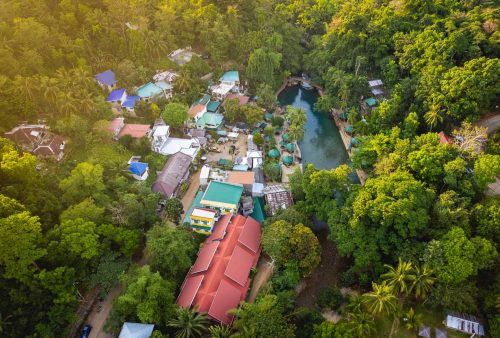Although traditionally a Celtic Pagan festival from Northern Ireland, Halloween was given significance in the Christian calendar, with All Saints’ Day and All Souls’ Day being added to coincide with the festival, which cemented its place on the 31st of October in the Gregorian calendar (which is what we use today).
While many countries celebrate Halloween in many different ways, some of the customs – mostly from the United States – have reached most of the world through popular culture via the media of television and film. Trick or treating, costume parties, horror houses, and Jack-o-Lanterns are very much a part of Halloween celebrations anywhere in the modern world.
In the Philippines, Halloween is celebrated as All Saints’ Day, immediately followed by All Souls’ Day (Araw ng Patay) on the 1st of November.
Halloween was not traditionally a Filipino celebration, although they do celebrate “Undas” (All Saints’ Day).
Trick or treating is gradually replacing the Filipino tradition of Pangangaluluwà, a local version of the old English custom of “Souling”. Some regions in the Philippines still celebrate Pangangaluluwà by forming groups that will walk from house to house and offer songs in exchange for money or food. This tradition, like most other local traditions, is beginning to fade. Pangangaluluwà featured Filipino children dressed in white or draped in white sheets (signifying ghost) singing songs about souls in Purgatory and asking for abúloy (alms for the deceased) to pay for masses for the dead. Along with the requested alms, householders sometimes gave children súman (rice cake) and other traditional delicacies. During the night, various small items, such as items of clothing and plants would “mysteriously” disappear, only to be discovered the next morning in the yard, or in the middle of the street. In ancient times, it was believed that during Halloween, spirits of dead loved ones visit and manifest their visit by taking an item.
Filipinos celebrate the memory of their dead in the first days of November. In the last week of October, they visit cemeteries where their relatives are buried to clean their gravestones and prepare for the ceremonies which invoke blessings and cleanse the sins of their dead relatives who are in purgatory. In the first two days of November (and nine days in the town of Betis, Guagua Pampanga), Filipinos visit the cemetery daily with flowers and candles to pray for their dead loved ones. Special masses are also held as part of the tradition. This tradition is called the Pag-siyam, and has its roots in the Spanish Era.





